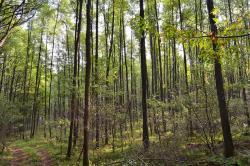Events
Sale of wood, christmas trees and saplings

Fire hazards
 Asset Publisher
Asset Publisher
 Asset Publisher
Asset Publisher
FORESTS OF THE FOREST DISTRICT
FORESTS OF THE FOREST DISTRICT
 Lasy nadleśnictwa, fot. Archiwum Nadleśnictwa Krosno
Lasy nadleśnictwa, fot. Archiwum Nadleśnictwa Krosno
 fot. Mariusz Grondys
fot. Mariusz Grondys
 Lasy nadleśnictwa, fot. Katarzyna Miechowicz
Lasy nadleśnictwa, fot. Katarzyna Miechowicz
The forests of the Forest District are located in III Nature – Forestry Country in Lubsukie Lake District, in Mesoregion of Lubusz Land (Ziemia Lubuska). The area of the Forest District Krosno is characterised with high forestation rate equalling 72% (one of the highest in the country). The south border of the Forest District makes the River Pliszka altogether with Ratno and Wielicko Lakes. The northern border constitutes the River Odra. In the southern part, there are numerous ponds and lakes, among others: Głębokie, Moczydło and Trzebiechowskie Lakes.
Forest Communities occurring within the areas of the Forest District:
- pine forests
- mixed coniferous forests
- beech forests
- oak – hornbeam forests
- oak forests
- riparian forests
In the territory of the Forest District Krosno within its natural range of occurrence, there are: Scots pine, beech, black locust, European white birch, English oak, Cornish oak, hornbeam, wild service tree, common ash, field maple, Norway maple, small leaved – lime, black alder, Scots elm, European white elm, field elm and common aspen.
The Forest District is located out of range of European spruce.
The forest stands of the Forest District are well accessible to the tourists through the network of forest roads and paths, where one cannot move by any motor vehicles, unless they are signed as public roads).







